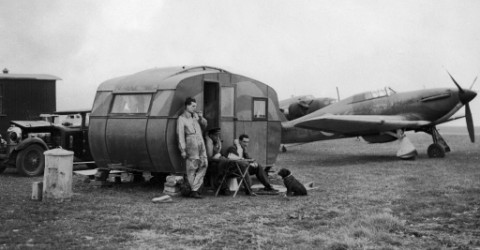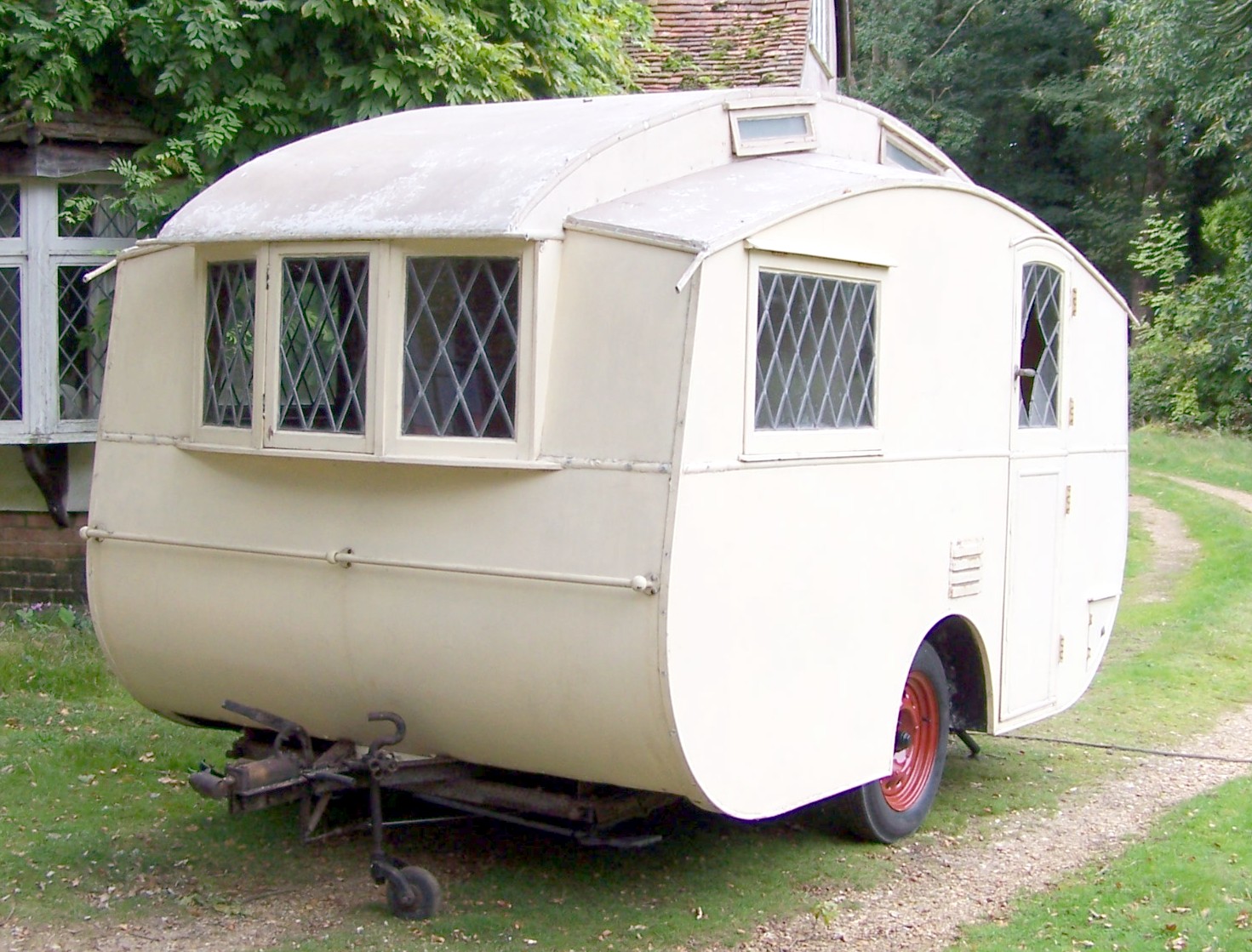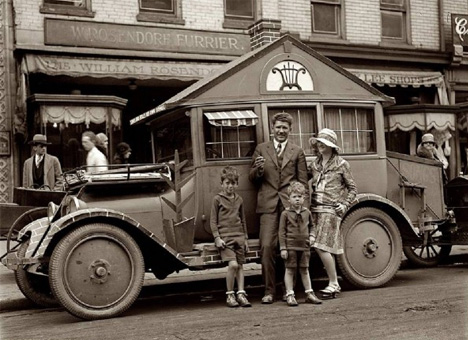Caravan History
1940's

Many caravans were used on airfields as ready rooms

The war saw the larger 1930s caravan manufacturers turn to war work. In doing so they learned much about mass production and manufacturing in large quantities, enabling them to make products cheaper. Many little firms sprang up after the war as many skilled men were demobbed. Most of these little companies only made a few caravans before being bought out or failed.
Sam Alper was producing caravans in London named streamlite out of old ex-war surplus stock. (In 1950, the Sprite name was born and by the mid 1950s the Sprite caravan was selling in hundreds, with dealer networks set up abroad as well as here in the UK). Caravans became big business and names such as Bluebird were being established.
Eccles, who had come out of the war as a cash rich company, invested heavily in new machinery using the latest woodworking machines. Jigs for sides and pre-built furniture awaited the production lines (to be installed in the caravans as they went past). The Eccles Enterprise,which the company had produced in the 1930s, was a basic caravan but had sold well. Eccles changed its steer in production to mid-priced, lower end caravans.
Thomson Caravans in Scotland had also learned much from the war years. They to had set up their factory to build medium priced caravans, with names taken from rivers and lochs.
Caravanning was returning and with this caravan sites too began to expand. Wise site owners invested in new facilities, which in turn saw them become very large concerns. The coast was a favourite place for most, with caravan sites appearing in virtually every UK seaside town. With materials becoming more plentiful by the end of the 1940s, caravan production was on the rise. Cars became increasingly popular as ownership soared and so to did caravanning.
It would be the next decade, the 1950s which would see an explosion of new caravan dealerships, manufacturers and better caravan sites. With the addition of new materials, the 1950s would be a very exciting period.
1946 Hemley Dormouse
